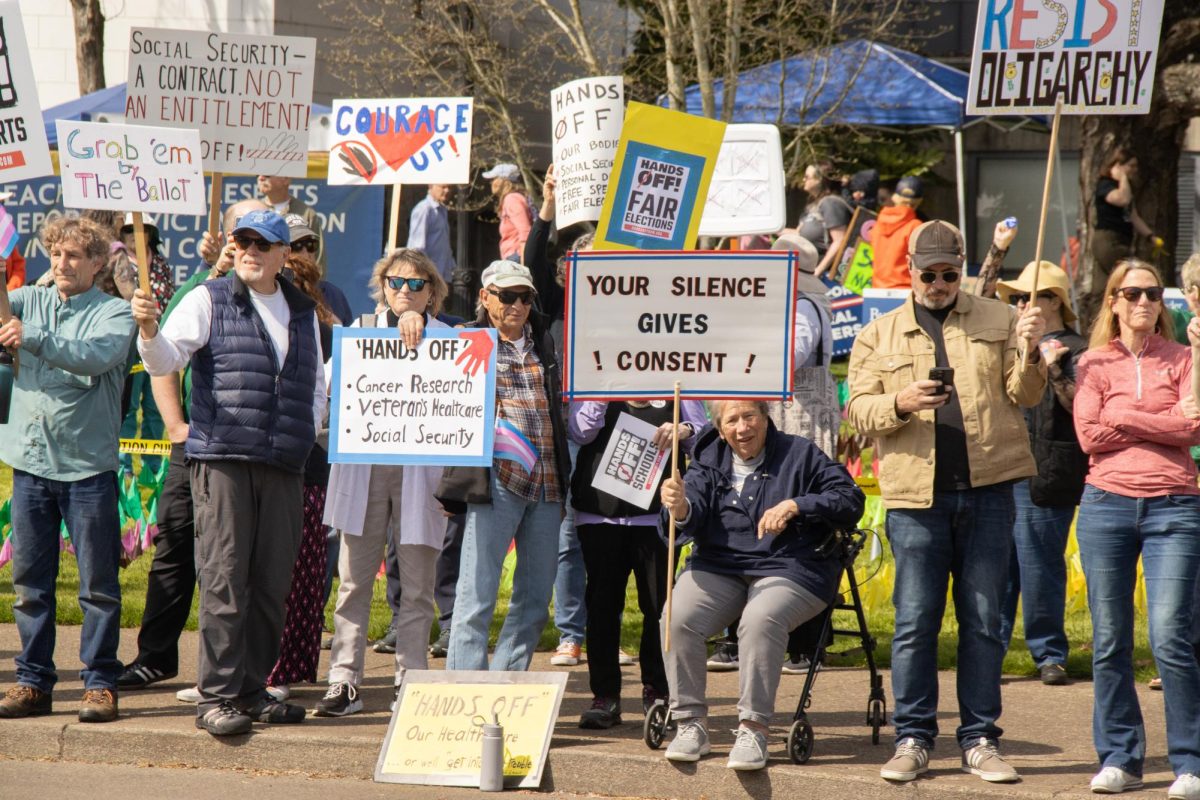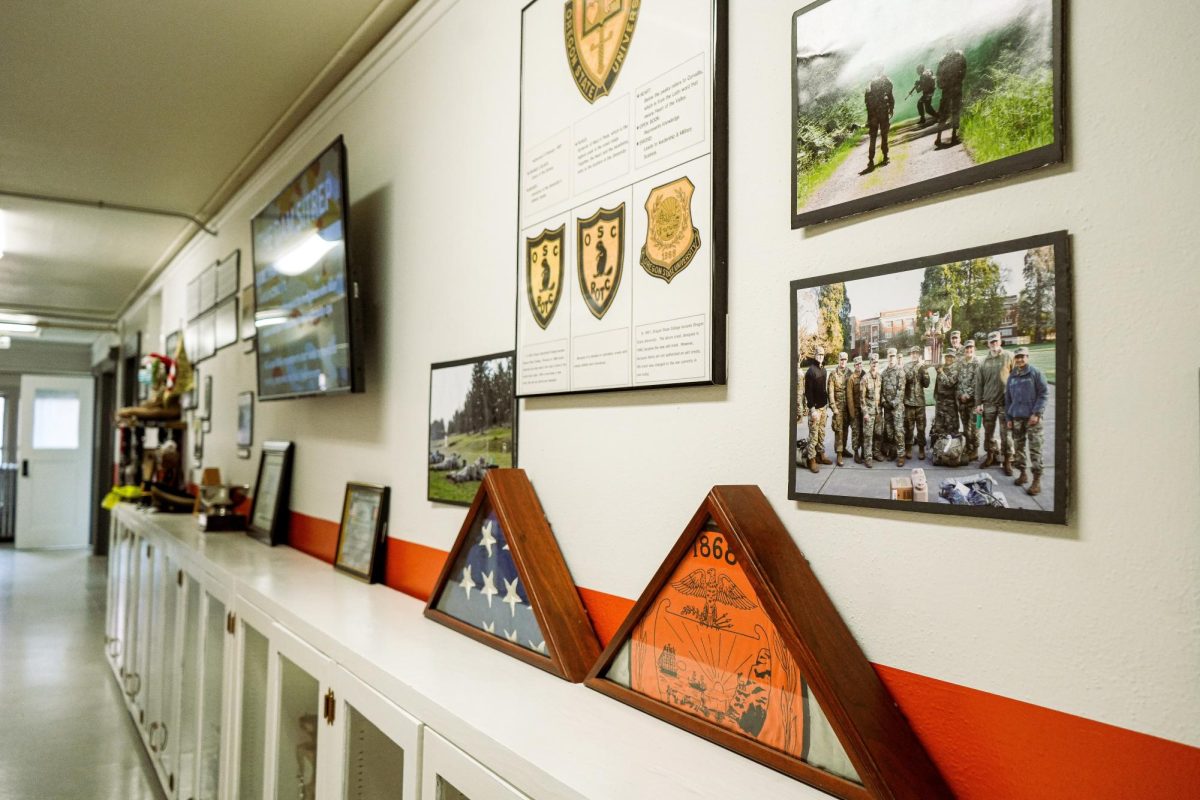ASOSU resolution pushes OSU to meet 2025 carbon neutral goal
April 29, 2019
Associated Students of Oregon State University members are looking to propose a plan for sustainability changes on campus, which could lead to OSU getting closer to meeting its 2025 carbon neutrality goal.
ASOSU is currently working on a joint resolution titled Institutional Environmental Goals and Priorities. ASOSU Coordinator of Environmental Affairs Zac Pinard worked alongside ASOSU Representative Laura Love and ASOSU Senator Dylan Perfect, as well as ASOSU Senator Dylan Young, and their team to construct this resolution. The resolution contains sustainability suggestions meant to take place on campus, each one focusing on a different environmental topic. The resolution will be sent to the Oregon State University President and the Student Trustee.
The first suggestion the resolution makes is to have the university prioritize greenhouse gas emission reductions, and focus fundraising opportunities around that.
“A good example of this request is the green building initiative associated with the Kelley Engineering Center,” Perfect said. “This is mostly being coordinated by Pinard, who has done a lot of the work for this resolution.”
According to Pinard, Kelley Engineering Center currently has a broken solar thermal heating system on the roof, and replacing it would be a great start to this initiative. All building improvements, however, will require lots of fundraising.
“Seventy-five percent of the emissions on campus come from buildings, so remodeling them to emit less would help that.” Pinard said.
The second point of the resolution suggests hiring more staff members into University Facilities, Infrastructure and Operations to focus specifically on reducing the university’s carbon emissions. Perfect said there is currently a very limited staff in UFIO, making it so that they are more spread thin, and adding more staff members to focus on this concern specifically could help simplify the complex issues that may arise from energy use on campus.
“If anyone has control over the future it’s the university, and we are not on top of that right now,” Love said. “Sustainability has to be placed alongside our financial responsibilities as being equally important.”
The third and final suggestion the resolution makes considers charging each university department for their utility costs directly. If this were to be passed, the idea is that every university department would monitor their energy usage more carefully in order to spend less money on bills.
“We worked closely with the Sustainability Office, and this was another one of the changes they suggested. Some of the departments on campus fall under the category of non-billable units, and their utilities are funded elsewhere, so they don’t see the costs of these utilities and therefore have less motivation to conserve” Pinard said. “The goal of this proposal is to internalize utility costs so those departments can see the costs and be more aware of what they are using.”
Dylan Young, Student Government Committee Chair, thinks this resolution is a good way to get conservation effort conversations started.
“Oregon State signed an agreement to move to be carbon neutral by 2025, we unfortunately still have a long way to go,” Young said, via email. “Not every one of the proposals we come up with will be approved, but it is important that we start that dialogue. We’ve made the commitment, now what? Where do we go from here?”
The first reading of this resolution was on Tuesday, April 23, and the joint session was on Wednesday, April 24. Senate will re-read and vote on this resolution on Tuesday, April 30 and by week 6, both house and senate will have reviewed and voted on this resolution.
A joint resolution is different from a bill, however. According to Love, ASOSU is not demanding these changes from the university, but they are asking for them to be looked into. Love also heavily encourages student responses and opinions on this resolution.
“If students take a moment to look at the resolution and think it isn’t enough, I want feedback from the student body so we can try to invest our tuition dollars towards a school we believe in,” Love said.




















































































![Newspaper clipping from February 25, 1970 in the Daily Barometer showing an article written by Bob Allen, past Barometer Editor. This article was written to spotlight both the student body’s lack of participation with student government at the time in conjunction with their class representatives response. [It’s important to note ASOSU was not structured identically to today’s standards, likely having a president on behalf of each class work together as one entity as opposed to one president representing all classes.]](https://dailybaro.orangemedianetwork.com/wp-content/uploads/2025/03/Screenshot-2025-03-12-1.00.42-PM-e1741811160853.png)























